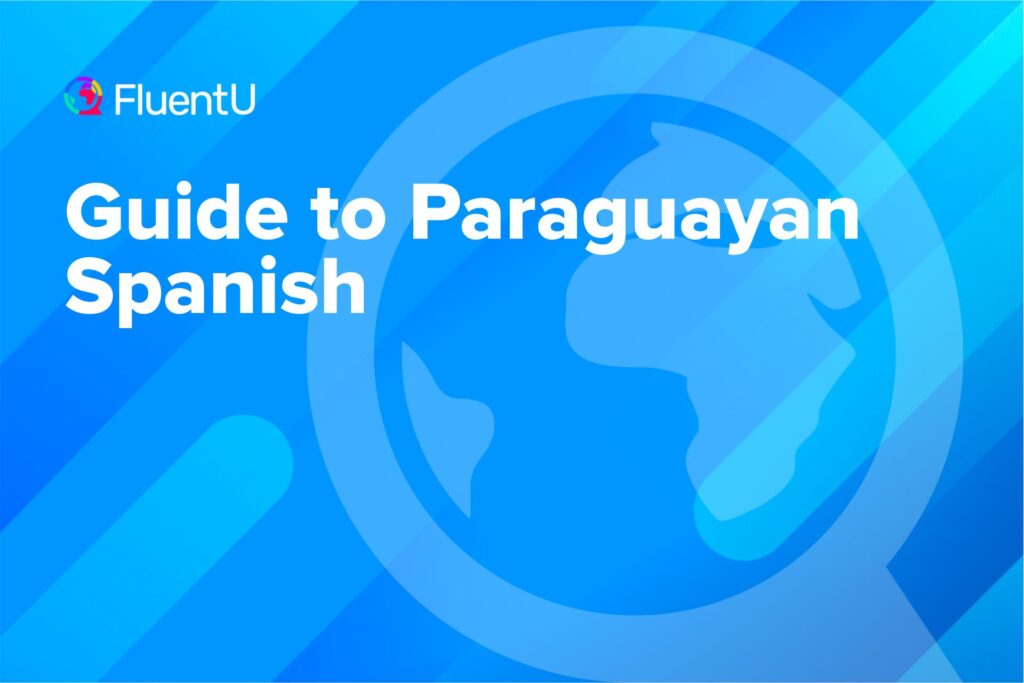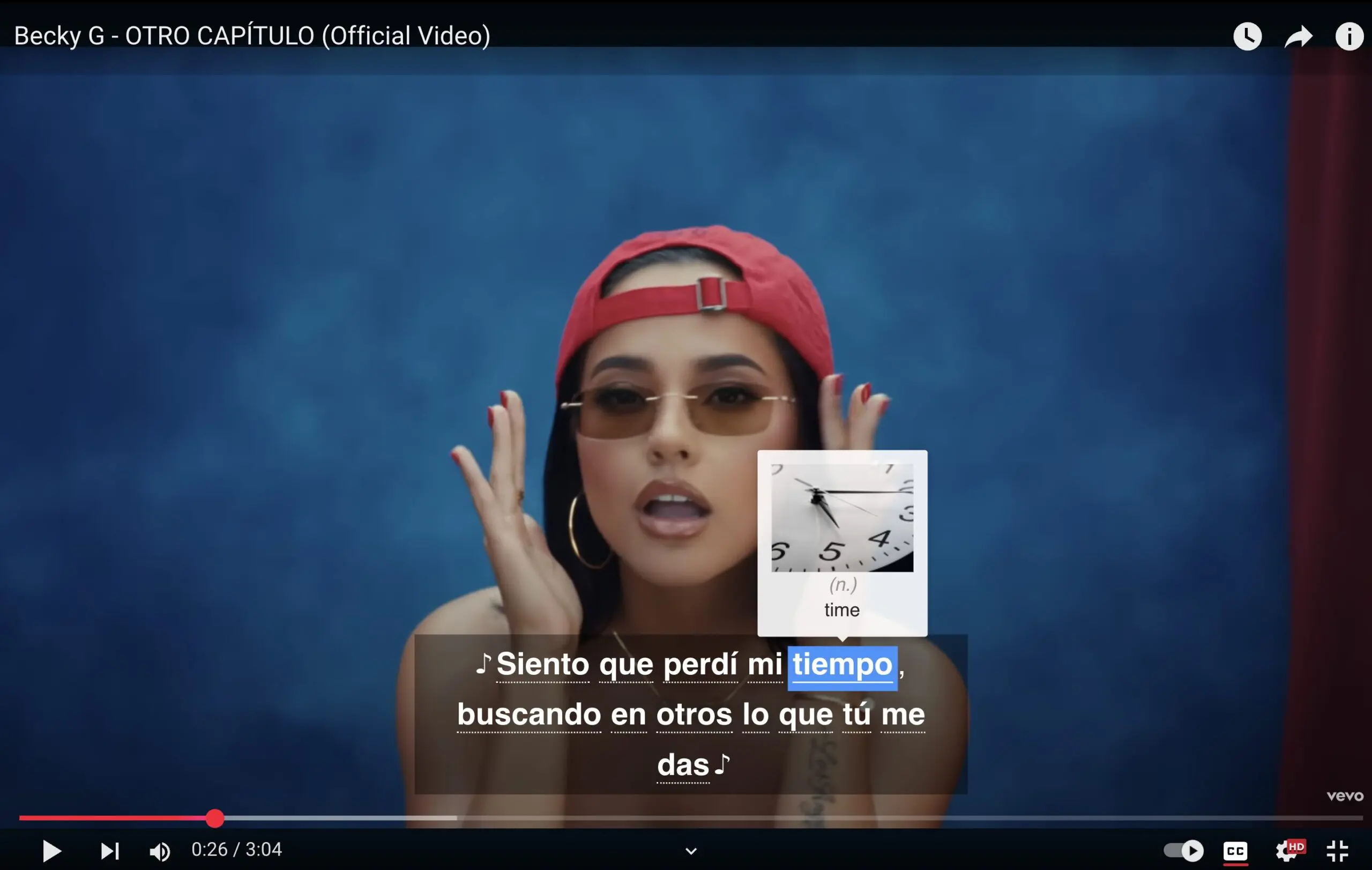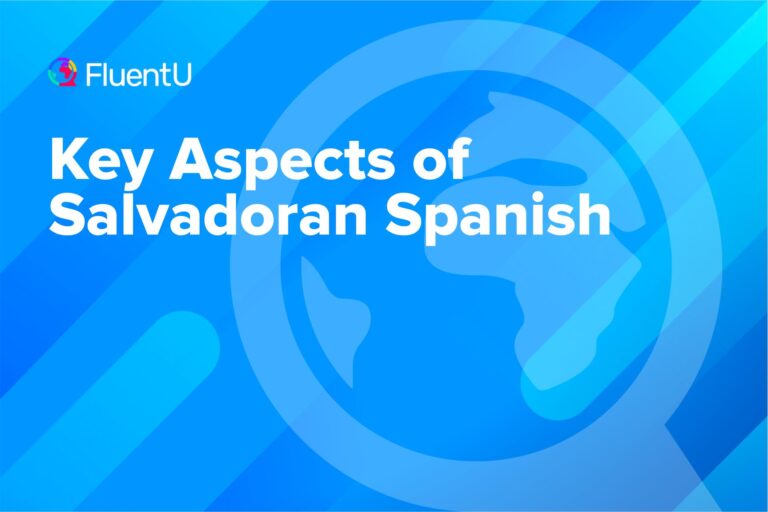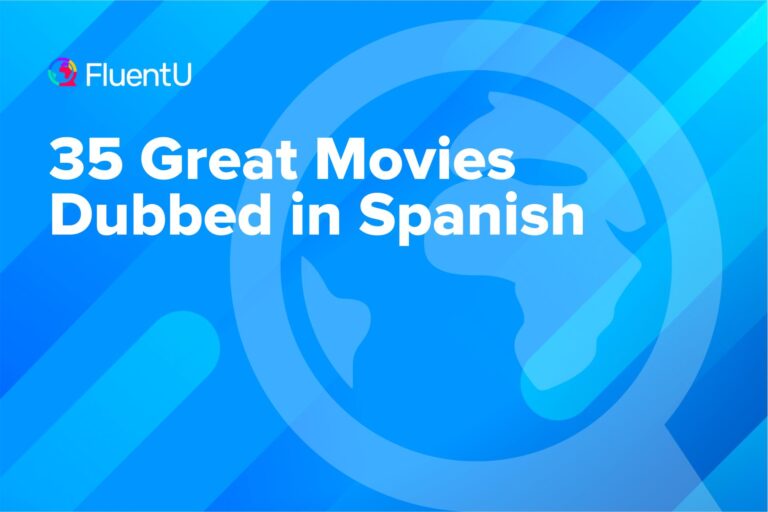Guide to Paraguayan Spanish

If you’re planning to visit or live in Paraguay, or you want to connect with some Paraguayan friends, you’ve got to learn Paraguayan Spanish.
Keep reading to learn more about what makes Paraguayan Spanish unique from other varieties of Spanish. We’ll give you some key tips that will help you connect with Paraguayans and sound more like a local.
Download: This blog post is available as a convenient and portable PDF that you can take anywhere. Click here to get a copy. (Download)
What is Paraguayan Spanish?
Paraguayan Spanish is the variant of Spanish spoken in the country of Paraguay. It has several distinctive features influenced by the country’s history, geography and bilingual culture.
Paraguayan Spanish is significantly influenced by Guaraní, an indigenous language widely spoken in Paraguay. Guaraní was established as a co-official language of Paraguay alongside Spanish and is taught in schools across the country.
When learning Paraguayan Spanish, you’ll find many words that are borrowed from Guaraní, especially for everyday items, food and cultural concepts. For example, mandioca (cassava) and chipa (a type of bread) are Guaraní terms used commonly in Paraguayan Spanish.
You can hear Guaraní spoken by a native Paraguayan in this video, with a bit of Spanish mixed in:
History of Paraguayan Spanish
Paraguayan Spanish has its roots in the colonial period when Spanish conquistadors and missionaries arrived in the 16th century. The Spanish Crown established the Governorate of Paraguay, and Asunción, the capital, became a hub for Spanish settlement and influence.
Guaraní was the dominant indigenous language in Paraguay before the arrival of the Spanish. Over time, Spanish and Guaraní languages merged, creating a unique bilingual society.
After gaining independence from Spain in 1811, Paraguay experienced a series of political changes. Despite various regimes, the coexistence of Spanish and Guaraní continued. Due to Paraguay’s geographic isolation, the region developed its own distinctive Spanish dialect.
In the 20th century, urbanization and modernization influenced the spread and use of Spanish, particularly in cities. Spanish became the primary language of education, government and business, while Guaraní remained prevalent in rural areas and everyday communication. Today, many Paraguayans speak Jopara, a mix of Spanish and Guaraní.
Cultural Aspects of Paraguayan Spanish
The interplay between Spanish and Guaraní is a significant part of Paraguayan cultural identity. It reflects the country’s history and the ongoing influence of indigenous culture.
Media in Paraguay, including newspapers, television and radio, often utilize both languages. Literature and music also reflect this bilingual nature, with many works blending Spanish and Guaraní to convey the Paraguayan experience.
This blend of languages and cultures has created a distinctive linguistic and cultural landscape, characterized by widespread bilingualism and mutual influence between Spanish and Guaraní.
How to Speak Paraguayan Spanish
The pronunciation in Paraguayan Spanish tends to be softer and more nasal, influenced by Guaraní phonetics. There’s also a distinctive intonation pattern that sets it apart from other Spanish dialects.
In addition to pronunciation and vocabulary, Guaraní influence can be seen in the sentence structure and the use of certain grammatical forms in Paraguayan Spanish. For example, the frequent use of diminutives and the repetition of subject pronouns for emphasis.
This video includes a few examples of different paraguayos (Paraguayans) speaking the language:
As in any country around the world, Spanish won’t sound exactly the same in all regions of Paraguay. However, there are some overarching tips that will make learning Paraguayan Spanish easier.
Turn the “S” into a Soft “H”
Paraguayan people will often turn an “s” into a soft “h.” Talking to a Paraguayan friend, you may notice that the expression más o menos (more or less) would sound like “máh o méno.” The word español (Spanish) would also sound like “ehpañol.”
Other examples are estamos (we are), which would be pronounced “ehtamo,” and hasta (until), which would likely sound like “ahta.” Check out how this sounds when spoken by a Paraguayan:
Pay Attention to “R” and “Tr”
In some regions of Paraguay, the letters “tr” as in trabajo (work), trio (trio) or trampa (trap) could be pronounced with the sound of a very soft, quick “tch.” Think “tchabajo,” “tchio” or “tchampa.”
Additionally, it’s not uncommon for the “r” at the end of a word to be strongly pronounced and somewhat exaggerated when talking enthusiastically, fervently or jokingly about a topic.
Not only does this strong “r” sound flow easily within the language, it also helps the message come across as funnier or stronger:
¿Dónde está mi celularrrrrr? (Where’s my cellphone?)
In some variations of Paraguayan Spanish, the “r” will be pronounced very similarly to English, and only in particular words within a sentence—you can see how that would sound in this Paraguayan YouTuber’s video between the 0:11 to 0:16 mark:
Turn the “Y” at the Beginning of Words into a Soft “J”
When at the beginning of a word, it’s extremely common for the letter “y” to be pronounced as a soft “j.” For example:
- ya (already) is pronounced “ja”
- yo (I) is pronounced “jo”
- yacaré (alligator) is pronounced “jacaré”
- Yugoslavia is pronounced “Jugoslavia”
Remember: the final sound will always be a very soft blend between a “y” and a “j.” Make sure you don’t draw too much attention to the sound, and keep it smooth!
Swap Your “LL” for “Y”
As it happens with other versions of Latin American Spanish, in Paraguay the digraph ll (or double “l”) will regularly adopt the sound of… a “y.” For example:
- lluvia is pronounced “yuvia” (rain)
- llamar is pronounced “yamar” (to call)
- ella is pronounced “eya” (she)
- llorar is pronounced “yorar” (to cry)
As in the previous case, here you must be careful not to exaggerate and instead go for a smooth blend between “ll” and “y,” as there won’t always be a clear distinction between one and the other when talking to native speakers.
Get Familiar with Vos
If you plan on spending time with Paraguayan friends, you may notice they often use the word vos instead of tú to refer to “you,” the second person singular.
The verb for this is vosear. Replacing tú with vos is a major departure from Castillian Spanish and even from the Spanish of other Latin American countries.
Vos requires particular verb conjugations that differ from those we use with tú. For instance, instead of saying tú tienes, you would use vos tenés (you have). Rather than saying tú eres (you are), you would use vos sos.
Other common examples include:
- tú hablas → vos hablás (you talk)
- tú pides → vos pedís (you ask for something)
- tú comes → vos comés (you eat)
- tú puedes → vos podés (you can)
- tú pones → vos ponés (you put)
Keep in mind that vos is used in Paraguay informally, such as between friends or a parent and child. Also, it’s not unusual for vos and tú verb conjugations to get mixed up in the same conversation, sometimes by the same person!
Use These Local Expressions
Due to its peaceful coexistence with Guaraní, Paraguayan Spanish uses several phrases that are translated from the indigenous language, creating a whole new swath of expressions you won’t find anywhere else.
Take, for example, the expression Te voy a contar ahora después (literally, “I’m going to tell you now later”), which comes from the Guaraní expression Amombe’úta ndéve anga upéi.
Saying “now” and “later” together seems strange, but happens regularly in Paraguay to emphasize the time when the action will actually take place. In this case, Te voy a contar ahora después indicates that you’ll tell somebody something later, but with the intention of it being pretty soon.
Then there are some short, super versatile words and phrases that pay homage to Guaraní, including:
- ¡Ma’ena! (Something like “awwww!”)
- ¡E’a! (Expressing surprise)
- ¿Ha upéi? (What’s up?)
- ¡Anichéne! (No way!)
Other Paraguayan expressions you can count on:
- Guapo(a) usually means attractive, but in Paraguay, it’s used to describe a hardworking person.
- Hay que viene, from the Guaraní Oĩ oúva, translates to “Someone’s coming” and is usually used when someone’s knocking or ringing the doorbell.
- ¿Y después? (And then?) is often used when answering the phone to ask “What’s up?” as a translation of the Guaraní expression ¿ha upéi?
- Was something done in a hurry, in improvisation or without a plan? Then it was done a la bartola (sloppily, carelessly).
- Not really feeling like going out? You can use the expression Estoy kaigue, meaning you feel lazy, or just don’t feel like it.
- You can use the expression vaí-vaí (literally “bad bad” in Guarani) to say that something isn’t going well.
- Paraguayan teenagers often use the word purete, which means “awesome.” A person, place or thing can be purete.
Check out some more Paraguayan slang here.
Where to Practice Paraguayan Spanish
The best way to get familiar with Paraguayan Spanish is by listening to native speakers use it in various contexts. Check out these options.
Listen to Paraguayan Music
A great way to start getting familiar with the sound and culture of Paraguayan Spanish is to enjoy catchy Spanish songs from Paraguayan artists.
- Indie rock is a popular genre in the country. Some favorite alternative bands include Villagrán, La de Roberto and Salamandra.
- If you enjoy pop music, check out Kchiporros, Rumberos, and Ivan Zavala.
- Into jazz and soul? These Guaraní Soul Sessions feature unique versions on songs from various artists.
- Finally, you can explore traditional music genres like the Paraguayan polka and guarania with composers like Emiliano Fernández, Demetrio Ortiz or Mauricio Cardozo Ocampo, along with the famous hit “India” by José Asunción Flores.
Follow Paraguayan YouTubers
Paraguayan YouTubers let you hear authentic, up-to-date local Spanish for free—and their videos are entertaining, too!
- ChennyTV is a popular YouTube channel in Paraguay created by Jennyfer Santos from Ciudad del Este. The channel features a variety of content including videoblogs, reaction videos and comedy sketches.
- Emi Báez cocina will teach you how to make Paraguayan dishes while exposing you to Paraguayan Spanish. Her goal is to share quick, easy and delicious recipes that celebrate Paraguayan culture.
- Somos GEN features news from Paraguay and beyond, covering topics including current events, sports and entertainment. They often highlight local stories and personalities, providing an inside look into Paraguayan identity and culture.
Consume Other Authentic Content
Beyond YouTube and music, surrounding yourself with authentic content is a great way to immerse yourself in Paraguayan Spanish.
You can check out Reel Good’s list of Paraguayan movies and TV shows that are available to stream on various platforms. Or, search for Paraguayan content on immersion software like FluentU, where you’ll find short videos from a variety of Spanish-speaking countries.
FluentU takes authentic videos—like music videos, movie trailers, news and inspiring talks—and turns them into personalized language learning lessons.
You can try FluentU for free for 2 weeks. Check out the website or download the iOS app or Android app.
P.S. Click here to take advantage of our current sale! (Expires at the end of this month.)

Now that you’ve been introduced to Paraguayan Spanish, make yourself a delicious homemade tereré, prepare a playlist of your favorite Paraguayan hits and get ready for some practice!
Download: This blog post is available as a convenient and portable PDF that you can take anywhere. Click here to get a copy. (Download)
And One More Thing…
If you want to learn Spanish with authentic materials but need a little extra support, then you need to know about FluentU.
FluentU lets you consume the same content as native Spanish speakers, but with tools to make it easier to pick up the language while you watch. You’ll learn Spanish as it’s actually spoken by real people, unlike programs that use scripted content.
You can bring our learning tools directly to YouTube or Netflix with the FluentU Chrome Extension, or check out our curated video library full of clips that cover a wide range of topics, as you can see here:
FluentU brings native videos within reach with interactive subtitles. You can tap on any word to instantly see its meaning, an image, and its audio pronunciation. Click on the word for additional examples and to add it to your flaschards.
To reinforce what you've learned, you'll complete engaging exercises and see more examples of the key words from the video. FluentU keeps track of the vocab you’re learning, and gives you extra practice with difficult words.
Start using the FluentU website on your computer or tablet or, better yet, download the FluentU app from the iTunes or Google Play store. Click here to take advantage of our current sale! (Expires at the end of this month.)











